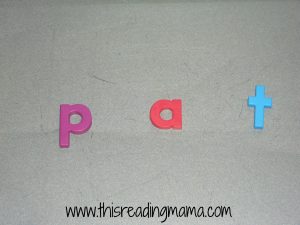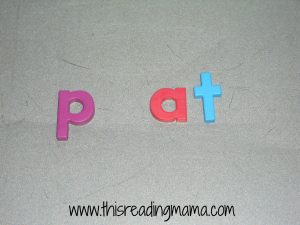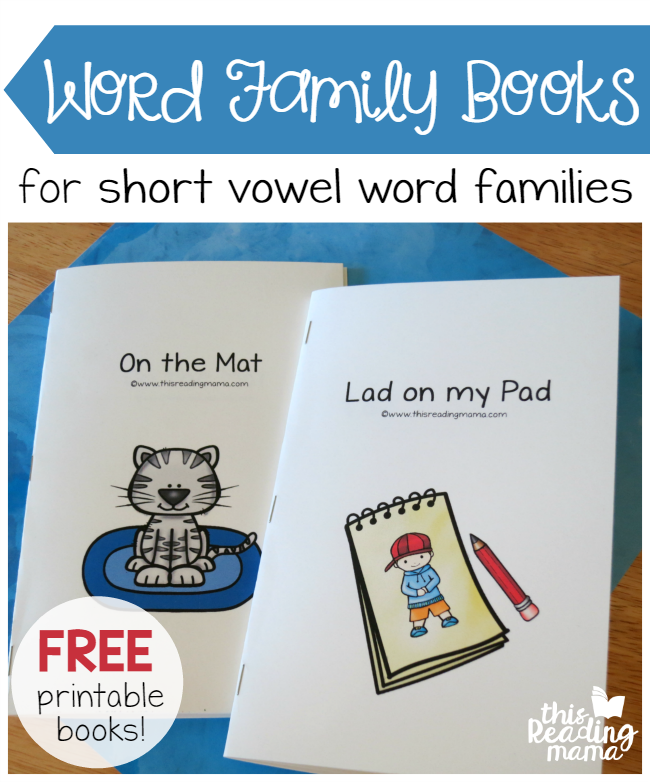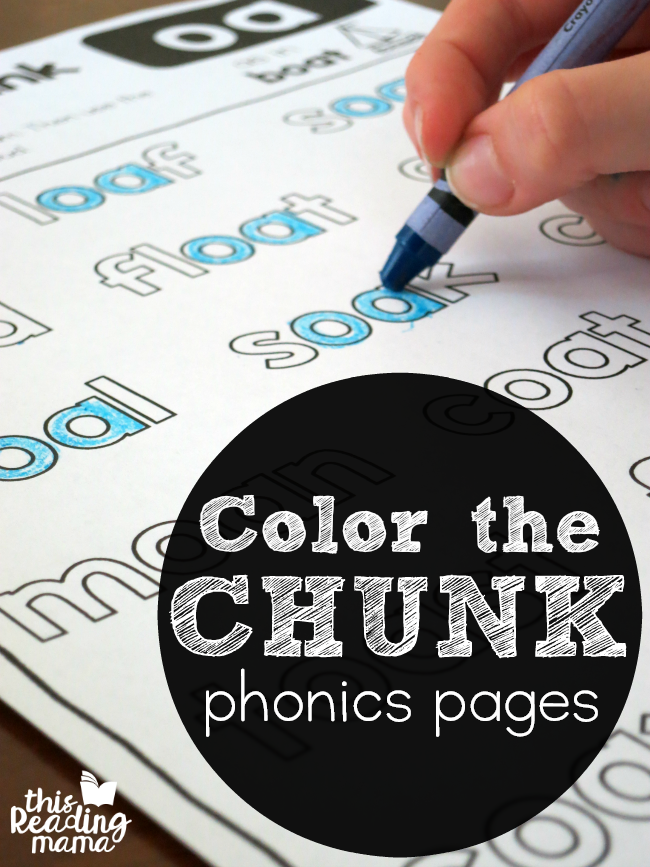Teaching word families to your child can form a useful part of helping your child learn to read. A knowledge of word families helps your child to recognise unfamiliar words quickly and so builds their confidence during the difficult early reading stages. Teaching word families is an integral part of teaching reading using analytic phonics.
Single syllable words can be broken down into two parts — the onset at the beginning, which is usually a consonant or consonant cluster, and the rime at the end. So, for example, in the word ‘bright’, ‘br’ is the onset and ‘ight’ is the rime. By varying the onset, you create a family of rhyming words such as ‘light’, ‘fright’ and ‘sight’. A word family is therefore a set of words with the same rime.
Grouping words into word families helps to improve the predictability of letter sounds. The sounds that letters make vary depending on the other letters around them. For example, think of the many different ways to pronounce ‘a’ depending on the word (eg map, cake, boat, head, said, salt, eat). Letters grouped together in a rime within a word family form a stable unit, which sounds the same in the majority of the words it appears in. This increases the probability that your child will read the letters correctly.
Why Is Teaching Word Families Useful?
There are various reasons why teaching word families is considered beneficial. Teaching word families can help your child to:
- Read unknown words by comparing them to known words If your child recognises that the rime segment of an unfamiliar word is identical to that of a word family they already know, they can then blend the known rime with the new word onset, in order to read the new word.
- Improve reading fluency Decoding new words by comparison to known word families is quicker than having to decode the word one letter at a time, since the rime is already known as a word chunk. For example, if your child knows the ‘-and’ word family, to read the word ‘bland’ they just needs to blend together the sounds for ‘b’, ‘l’ and ‘and’, rather than for all five letters.
- Improve spelling If your child is struggling to spell an unknown word, you can encourage them to search for a similar word in a word family which they already know how to spell. By changing the onset of this known word they will then be able to spell the new word.
Lists of Word Families
According to Wylie & Durrel (1970) the 37 most common word families can be used to learn 500 words. You can find examples of words in each of these families, plus a few additional families here.
If your child can already decode regular words, letter combinations, and high-frequency irregular words, they will already be able to read many of the words in these common word families using their decoding skills. In this case, a useful list to refer to is this short list of ‘Super Word Families’, which identifies the most frequently occurring word families which cannot be easily decoded:
- -air as in air, chair, fair, hair, pair
- -are as in care, scare, share
- -ead as in bread, dead, head, read, thread
- -ear as in dear, ear, hear, near, tear, year
- -ind as in find, kind, mind, wind
- -ook as in book, brook, cook, hook, look, shook, took
- -ore as in more, shore, store, wore.
Activities for Teaching Word Families
There are many fun and engaging activities you can do with your child when teaching word families.
One of the simplest is to write the rime of your chosen word family in a circle in the middle of a page and draw arrows out from the circle. Then ask your child to hunt through a book you have recently read together and find words which belong to that family, writing each word at the end of an arrow. When you have exhausted the words in the book, add additional ones which you brainstorm together.
Another good way of hunting for word families in a book, is to cut out a small window in a piece of card which corresponds to the size of the rime you are looking for in that particular book. The size of the window will vary between books depending on the typeface in the book. I found it easier to cut out the window if I folded the card in half and cut along the crease. Then ask your child to hunt for words containing the rime. Each time they find a word from that word family they should place the card over the word such that the rime appears in the window.
My children and I have had a lot of fun playing this commercially available game, POP for Word Families, where you try to win as many popcorn pieces as you can by making words with the right word-ending.
You could also try this online word family game from ReadWriteThink. Drag each new word to the correct word family column. Ask your child to say the word aloud as they drag it.
Here are some of my other favourite ideas for practicing word families which you can find on the internet.

Cut a small, spiral-bound book in half and write the onsets on one half of the pages and the rimes on the other half. Watch your child have fun making real and imaginary words as they flip the pages. From Quirky Momma.

Write a rime on one half of a plastic egg and different onsets on the other. Ask your child to rotate the egg and make the different words in the word family. From Tales of a Teacherista.

Pick a rime card then roll the letter dice to reveal an onset and make a word. Match the word with the corresponding picture. Print the resources at I Can Teach My Child.

Try this unusual idea for teaching word families from Michelle’s Charm World. Stick letters on bolts and then screw the bolts onto a screw. Ask your child to spin the bolts to make different words.

In this idea from No Time For Flashcards your child creates a literal ‘family’ of words. Write words from certain word families under pictures of mums, dads and children and ask your child to arrange the people into the correct family.

This is another activity from I Can Teach My Child. Using kitchen roll holders and paint stirrer sticks make these fun learning tools. Watch your child slowly pull out the inside stick and create lots of words in the word family.
You may also like:
You are here:
Home
›
Teaching How to Read
›
Teaching Word Families
Can’t find what you’re looking for? Try searching for it here.
Can’t find what you’re looking for? Try searching for it here.
Teaching Technique to Help a Struggling Reader
Nicole Yeary / Flickr / CC BY 2.0
Updated on October 05, 2019
An emphasis on sounding out words with isolated phonemes often leads students to dread reading and think of decoding as some sort of mystical power. Children naturally look for patterns in things, so to make reading easier, teach them to search for predictable patterns in words. When a student knows the word «cat,» he can pick out the pattern with mat, sat, fat, etc.
Teaching patterns through word families— rhyming words—facilitates fluency, giving students more self-confidence and a willingness to use prior knowledge to decode new words. When students can recognize the patterns in word families, they can quickly write/name members of the family and use those patterns to nail down more words.
Using Word Families
Flash cards, and thrill and drill work to a certain extent, but providing your students with a variety of activities keeps them engaged and increases the likelihood that they will generalize the skills they acquire. Rather than using worksheets that can turn students with disabilities off (demanding the use of fine motor skills), try art projects and games to introduce word families.
Art Projects
Artistic word sorts with seasonal themes capture kids’ imaginations and use their enthusiasm for a favorite holiday to introduce and reinforce word families.
Paper Bags and Word Families: Print a variety of related words, then ask your students to cut them apart and put them in bags labeled with the corresponding word families. Turn them into trick or treat bags with crayons or cutouts (or buy some at the dollar store) and use them as a centerpiece in your classroom before Halloween. Or draw Santa’s sack for Christmas, and label them with a word family. Then instruct students to sort words written on «presents» cut from construction paper into the appropriate sacks.
Art Project Sorts: Draw or print Easter baskets and label each with a word family. Ask students to write associated words on Easter egg cutouts, then glue them to the corresponding basket. Display the word family baskets on the wall.
Christmas Presents: Wrap tissue boxes in Christmas paper, leaving the opening at the top exposed. Draw or print Christmas tree ornaments shapes and write words on each one. Ask the students to cut and decorate the ornaments, then drop them into the proper gift box.
Games
Games engage students, encourage them to interact appropriately with their peers, and give them an entertaining platform on which to build skills.
Build Bingo cards with words from a word family, then call out the words until someone fills all of their squares. Occasionally insert a word that doesn’t belong in that particular family and see if your students can identify it. You can include a free space on the Bingo cards, but don’t allow students to use it for a word that doesn’t belong to that family.
Word ladders use the same idea. Following the pattern of Bingo, a caller reads the words and the players cover steps on their word ladders. The first student to cover all of the words on the ladder wins.
Have you ever heard of reading words by word family chunks? It’s actually a very powerful way to help kids read (and spell) new words!
Actually, this doesn’t just apply to word family chunks, all kinds of other chunks, like vowel teams and digraphs. You can find lots of chunking practice pages in our Color the Chunk Phonics pages collection.
*This post contains affiliate links.
Reading Words by Word Family Chunks
Not too long ago, a teacher friend explained that her reading curriculum instructed her to teach sounding out CVC words this way: pa – t. That is, reading or sounding through the vowel, then putting on the final sound. She said her learner was struggling to get it.
I wasn’t too shocked that it confused her learner because reading research shows that learning to read by word family chunks (rime) works much better for young readers.
This means instead of breaking the word apart this way:
pa – t
or even this way, which I don’t oppose at all (see below*):
p – a – t
the reader would break it apart this way:
p – at
Before diving into the nitty gritty with word families, I want to make sure I’m clear with the terms I’m using.
Onset- the letter(s) that appear before the vowel in a single syllable word. The onset can be a single letter (t-, l-, p- etc.) or multiple letters (tr-, sh-, str-, etc.).
Rime or Word Family Chunk– the chunk of letters, starting with the vowel that follows the onset (-an, -oat, -uck, etc.)
*Developmentally speaking, reading by word family chunk (p-at) is actually harder than saying each sound in the word (p-a-t). Often, learners aren’t ready to read by word family chunk until they can sound out each letter of the word.
Why Reading by Word Family Chunks Works
One of the reasons I’ve personally noticed that word family chunks work better is that many times the letter that follows the vowel dictates how the vowel sounds.
For example, in the words pan, paw, and pat, the a‘s all make a different sound; based on the letter that follows the a. Teaching a child to read through the vowel first, then add on the last sound can be counterproductive and lead to confusion.
Here are a few more reasons reading researchers are word family “crazy”:
- the division of words into initial letters (onset) and rime is easier for learners. For example, it’s easier and quicker for a child to change pat to cat or hat than it is to change pat to pan or pad.
- rimes are more reliable or stable
- making rhyming words is one of the earliest phonological skills and teaching by rime accompanies this skill nicely
- the brain works as a pattern detector, looking to chunk new words into pieces, so learning words by chunk works with, not against, the brain’s natural tendencies
- teaching by rime is the basis for learning how to read by analogy (refer to the pattern decoder reason above)
- introducing words by word family allows for new words to be introduced and learned more rapidly and easily
- rimes are the basis for syllable chunks that make up multisyllabic words; for example, hippopotamus is made up of four basic rimes (-ip, -o, -ot, and -us)
- just from the following set of 37 common rimes, nearly 500 primary words can be made!
| -ack | -all | -ain | -ake | -ale |
| -ame | -an | -ank | -ap | -ash |
| -at | -ate | -aw | -ay | -eat |
| -ell | -est | -ice | -ick | -ide |
| -ight | -ill | -in | -ine | -ing |
| -ink | -ip | -it | -ock | -oke |
| -op | -ore | -or | -uck | -ug |
| -ump | -unk |
I’ve included 55 rimes on this free word family rimes chart. It’s a great tool for young readers and spellers.
I love how Francine Johnston gives more guidance when teaching word families in her section: How Should We Study Word Families in a Developmental Fashion?
She suggests doing it this way…
- Start with one word family at a time (for example, -at)
- Begin comparing word families with the same vowel (-at, -an, -ag)
- Move on to comparing rimes with different short vowels (-at, -it).
So, there’s a lot to be said for word families. They are the foundation for reading and writing new and bigger words and give our young learners decoding/spelling strategies to tackle those words.
You Might Like
Word Family Books
Resources: (all of these resources reference other leading researchers in the field, from years ago until today’s researchers)
- Phonics They Use (Pat Cunningham)
- Beginning to Read: Thinking and Learning about Print (Marilyn Jager Adams)
- The Reading Teacher, The Timing and Teaching of Word Families (Dr. Francine Johnston)
- Words Their Way (Bear, et. al)
Enjoy teaching!
~Becky









